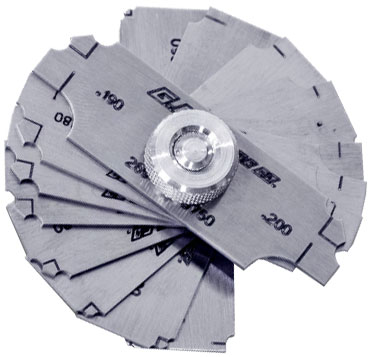The Ultimate Guide to Fillet Weld Quality Assurance: Guaranteeing Toughness and Sturdiness in Your Welded Joints
In the realm of welding, ensuring the stamina and resilience of fillet welds is vital for the stability of bonded joints. The high quality control measures executed during the welding process can significantly influence the structural strength of the last product. From the selection of suitable products to the meticulous assessment of welds, each step plays a crucial role in identifying the total quality of the weld joint. As we start this exploration of fillet weld top quality control, we will discover vital elements that affect weld toughness, explore efficient examination approaches, and review approaches for stopping typical weld issues. Keep tuned to discover exactly how understanding these methods can boost the sturdiness and dependability of your bonded joints.
Significance of Fillet Weld Quality Assurance
Making sure proper fillet weld quality control is paramount in ensuring the structural integrity and long life of welded components in different markets. Fillet welds are typically utilized in architectural steelwork, bridges, stress vessels, pipelines, and other crucial infrastructure where the toughness of the weld is critical to overall safety and security and efficiency. Quality assurance measures such as aesthetic inspections, non-destructive testing, and adherence to welding procedures help determine prospective defects like lack of fusion, incomplete infiltration, damaging, or too much support.
Trick Factors Influencing Weld Strength
Achieving optimal weld stamina requires cautious consideration of various key aspects that influence the honesty and durability of the bonded joint. The initial important aspect appertains joint prep work, which involves cleaning the base steels to eliminate any type of impurities that could damage the weld. In addition, the fit-up of the joint is necessary to make sure proper infiltration and combination of the filler product.
The choice of the ideal welding strategy and criteria also plays a considerable duty in establishing weld toughness. Aspects such as heat input, travel rate, and electrode angle can affect the quality of the weld. In addition, preserving the appropriate interpass temperature level throughout multi-pass welding is vital to stop cracking and make certain a strong bond between the layers.
Furthermore, the option of filler material and its compatibility with the base metals is important for achieving high weld stamina. Making use of filler product with the appropriate mechanical buildings can improve the overall honesty of the weld. Finally, post-weld heat treatment and appropriate evaluation methods are necessary action in guaranteeing the stamina and sturdiness of the bonded joint.
Inspection Approaches for Weld Stability

Another important assessment technique is fluid penetrant screening, where a fluid color is related to the weld surface - Gauge Fillet Weld. The color seeps into any surface-breaking issues, making them visible under UV light. This method works for discovering flaws that might not show up to the naked eye


Ultrasonic screening is additionally extensively utilized for inspecting weld integrity. High-frequency sound waves are learn the facts here now routed right into the weld, and any type of disturbances in the acoustic wave pattern indicate potential defects like fractures or lack of combination.
These examination methods play an essential duty in guaranteeing the top quality and reliability of welds, eventually adding to the total stamina and resilience of welded joints in commercial setups.
Preventing Typical Weld Defects
In order to preserve the architectural integrity of welded joints in industrial applications, it is crucial to execute safety nets to attend to common weld problems. One typical defect is lack of fusion, where the filler product falls short to bond properly with the base steels, leading to weak points in the weld. This can be prevented by ensuring appropriate warmth control and Gauge Fillet Weld making use of the right welding technique.
One more constant problem is porosity, caused by gas entrapment in the weld metal during the welding procedure. To avoid this, it is important to cleanse the base steels extensively, use dry electrodes, and preserve a suitable welding environment with correct ventilation.
Additionally, fractures in welds can jeopardize the joint's stamina. To prevent this problem, it is necessary to manage the air conditioning rate after welding, utilize preheating when necessary, and choose appropriate welding specifications.
Enhancing Weld Durability With Correct Methods
One crucial approach to enhance weld sturdiness is to make sure appropriate weld grain positioning. By placing the weld grain accurately within the joint, the weld's strength and resistance to fatigue can be considerably boosted.
Choosing the best filler steel and guaranteeing the tidiness of the base metals can protect against inclusions and various other flaws that might compromise the weld's durability. By applying these proper strategies, welders can make sure that their bonded joints show outstanding strength and toughness, satisfying the greatest quality criteria.
Conclusion
Finally, keeping high top quality control requirements for fillet welds is critical for making sure the stamina and resilience of welded joints. By comprehending the crucial aspects affecting weld stamina, utilizing inspection techniques for weld honesty, avoiding common weld defects, and using appropriate methods, welders can enhance the general toughness of their welds. It is vital to prioritize high quality control steps to create trusted and durable bonded joints.
In the realm of welding, ensuring the toughness and sturdiness of fillet welds is extremely important for the honesty of bonded joints. As we embark on read this expedition of fillet weld top quality control, we will certainly uncover crucial factors that affect weld toughness, delve into effective evaluation approaches, and go over methods for stopping typical weld problems.Achieving optimum weld stamina requires careful consideration of various key elements that influence the stability and resilience of the welded joint (Gauge Fillet Weld).In verdict, keeping high quality control criteria for fillet welds is vital for making sure the toughness and durability of bonded joints. By comprehending the key elements impacting weld stamina, making use of examination approaches for weld integrity, preventing common weld flaws, and using appropriate techniques, welders can enhance the general longevity of their welds